Indoor plants have the magical ability to breathe life into any space, transforming it into a vibrant oasis of tranquility and charm. Whether you’re a novice decorator or a seasoned stylist, incorporating greenery into your home not only enhances its aesthetic appeal but also offers a host of practical benefits, like improved air quality and stress reduction. In our guide, “6 Easy Indoor Plant Styling Tips,” you’ll discover simple yet effective ways to elevate your interiors with the natural beauty of plants.
For beginners, this guide will demystify the art of plant styling, helping you to confidently select and position greenery in a way that complements your space. For experienced decorators, these tips will provide fresh inspiration and innovative ideas to further refine your indoor garden artistry. Each technique is designed to be accessible and actionable, ensuring that every reader can achieve a stunning transformation in their home.
Picture the joy of watching your living room flourish with carefully curated plant arrangements or the serenity of a bedroom transformed by a lush, green sanctuary. With these styling tips, you will not only enhance the visual appeal of your home but also create an environment that nurtures well-being and creativity. Dive into this guide and feel empowered to turn your space into a harmonious blend of nature and design, where every corner tells a story of life and elegance.
Choose Complementary Plant Containers
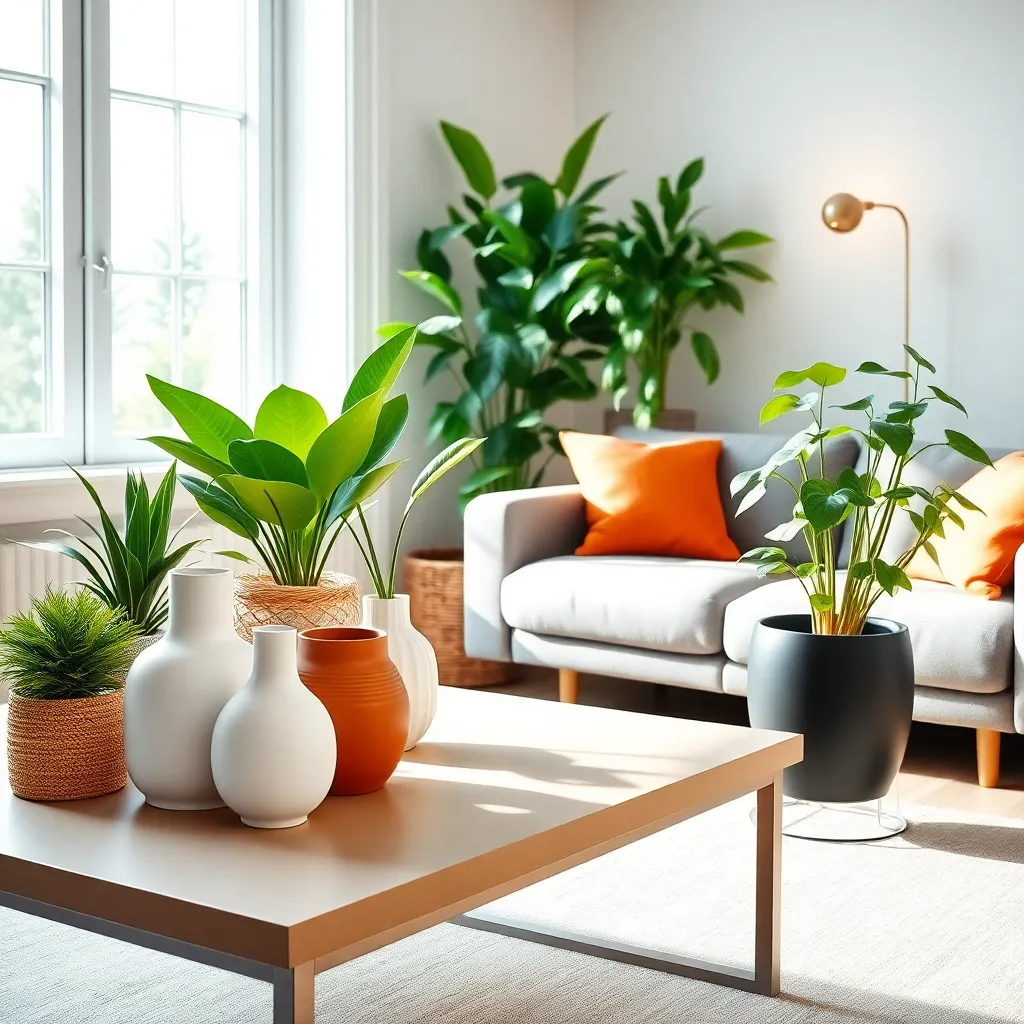
Choosing the right plant containers can significantly enhance the aesthetic appeal of your indoor greenery. Opt for containers that complement your existing decor by considering the style, material, and color scheme of your room.
For a modern and sleek look, consider using containers made from materials like ceramic or metal, which offer clean lines and a polished finish. These materials work well in contemporary spaces and can be found in a variety of colors to match your interior palette.
If your home leans towards a more rustic or bohemian vibe, woven baskets or terracotta pots are excellent choices. They not only add texture and warmth but also pair beautifully with natural materials like wood and linen commonly found in these styles.
Advanced decorators can experiment with grouping plants in containers of varying heights and sizes for visual interest. Use a mix of large floor pots and smaller tabletop planters to create layers and depth within a room, enhancing its overall design.
Group Plants for Visual Impact
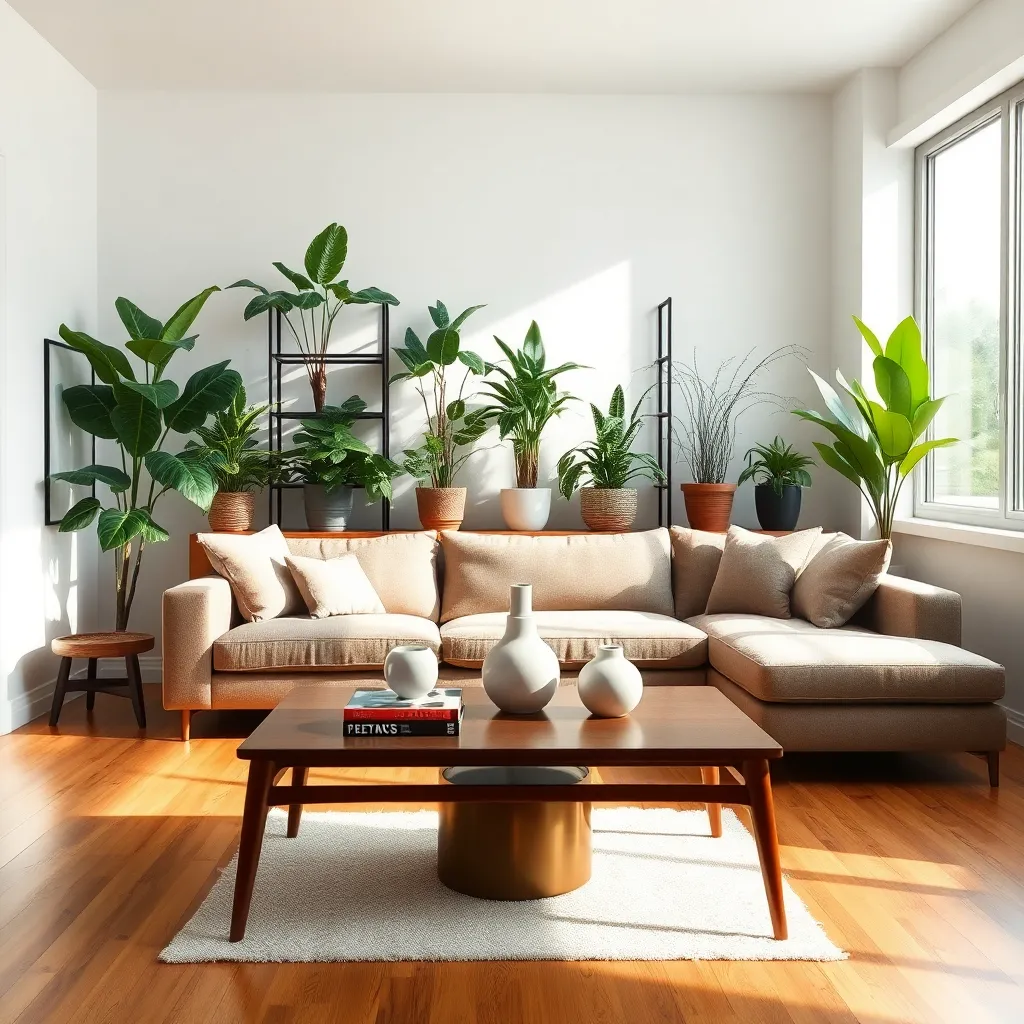
To create a striking visual impact, consider grouping plants of varying heights and shapes. This technique not only enhances the aesthetic appeal but also adds depth and dimension to any room. For beginners, start with a simple trio: a tall plant like a fiddle leaf fig, a medium-sized peace lily, and a small succulent. This combination offers a balanced look, with the tall plant drawing the eye upward and the smaller plants providing lush, contrasting textures.
Advanced decorators can experiment with groupings that incorporate different leaf colors and textures. For instance, pair a snake plant with its upright, sword-like leaves next to a bushy pothos, and add a colorful croton for a vibrant pop. This mix not only showcases a variety of forms but also introduces a dynamic color palette to your decor. Such combinations create a lively focal point that can transform a dull corner into an inviting nook.
When arranging your grouped plants, use various containers and stands to create layers and height differences. Elevating some plants on stands or books can help smaller plants reach eye level, ensuring each plant is visible and appreciated. Consider using materials like wicker for a rustic feel or sleek metal for a modern touch, which can subtly influence the overall style of your space.
The placement of your plant groupings is crucial for maximizing their visual impact. Ideally, position them near a natural light source, like a window, to ensure they thrive and maintain their vibrancy. However, if light is limited, opt for low-light tolerant plants like snake plants or ZZ plants, which can still create a lush, green effect without needing direct sunlight. Experiment with different placements until you find a configuration that elevates the room’s ambiance while meeting the plants’ light requirements.
Layer Heights for Dynamic Display
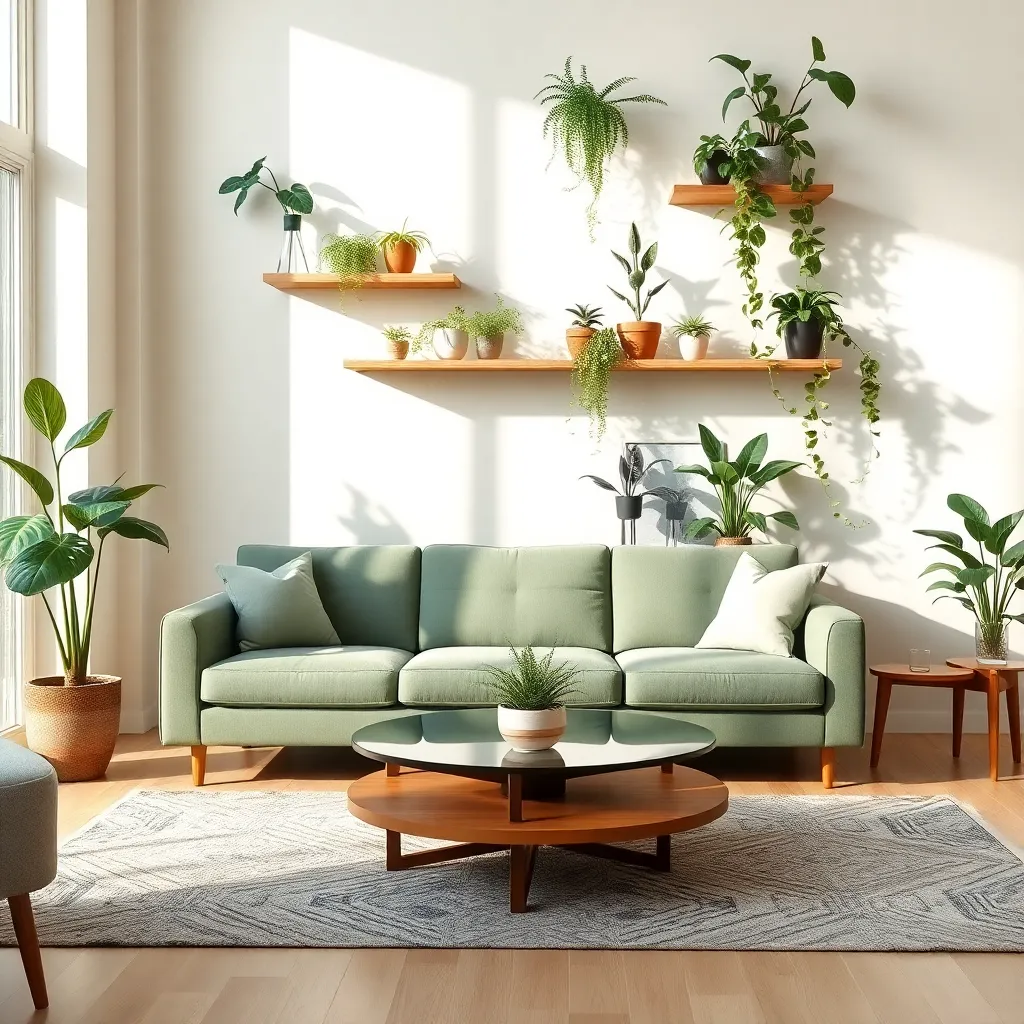
Creating a dynamic display with plants involves carefully considering the heights of your plant layers. Start with taller plants at the back, which could include floor-standing specimens like fiddle leaf figs or snake plants, to create a natural backdrop and add depth to your arrangement.
In front of these taller plants, place medium-height plants that can fill in gaps and add lushness. Consider using plants such as pothos or philodendrons, which offer rich greenery and cascading foliage that can bridge the space between tall and short plants.
Finally, add smaller plants in decorative pots to the front to complete the layered look. Succulents or small ferns are perfect choices, providing a pop of texture and color at eye level. This layering technique not only creates visual interest but also ensures that every plant gets adequate light and attention.
For a more advanced styling, incorporate varied pot heights using plant stands or stacked books to add even more dimension. Experiment with different materials like metal or wood stands to complement your existing décor, ensuring the arrangement feels cohesive and intentional.
Incorporate Plants into Shelving
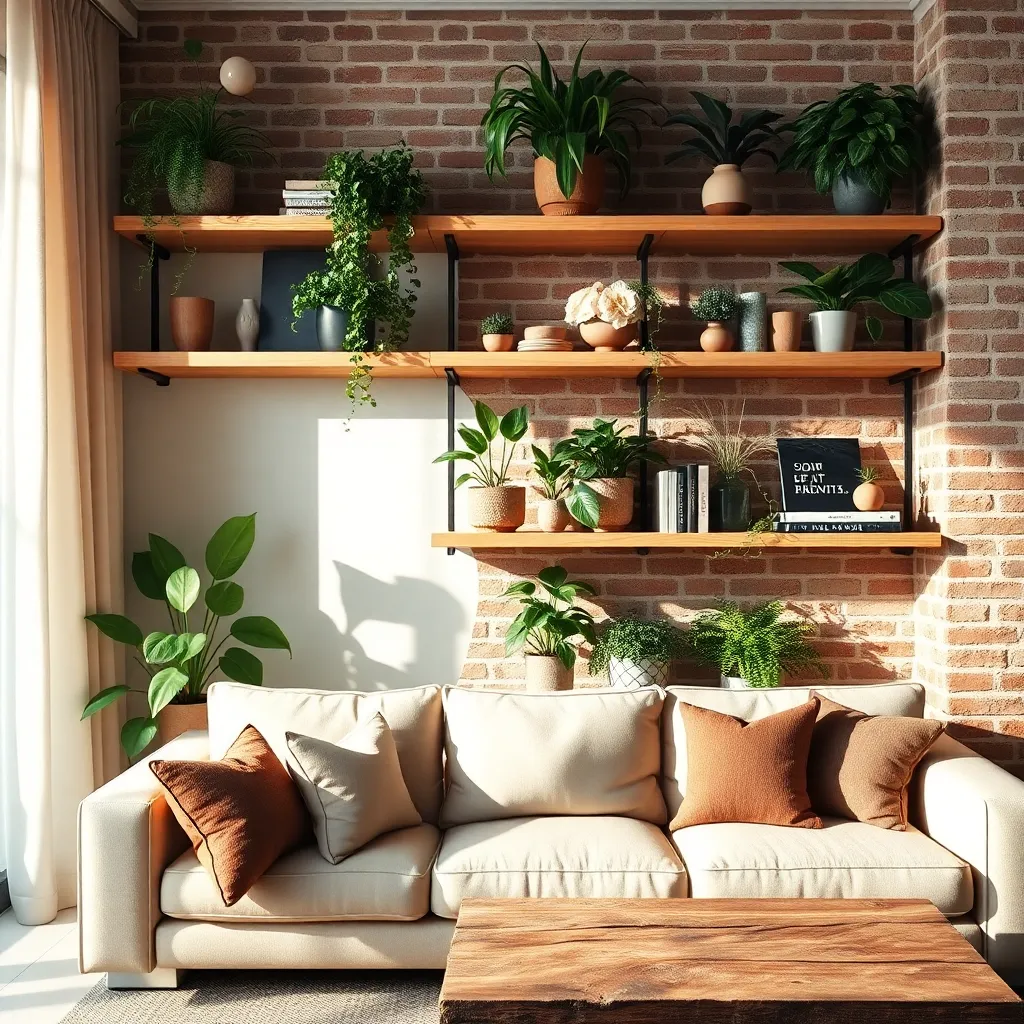
Incorporating plants into your shelving can transform a static display into a lively, vibrant focal point. Begin by selecting plants that complement the existing color scheme of your room, such as deep green foliage for neutral tones or bright blooms for more colorful spaces.
Choose shelves that can support the weight of the plants and allow enough space for growth. Floating shelves or those with adjustable heights work well, as they offer flexibility in arranging plants of various sizes.
When placing plants, aim for a mix of trailing, upright, and small potted varieties for an interesting composition. For beginners, consider easy-care options like pothos or succulents, while experienced decorators might experiment with more demanding species like orchids.
Enhance the display by using decorative pots that add texture and color to the arrangement. Opt for a mix of ceramic and terracotta pots to create a balanced look, and don’t be afraid to play with different shapes and finishes for added visual interest.
Use Plants as Room Dividers
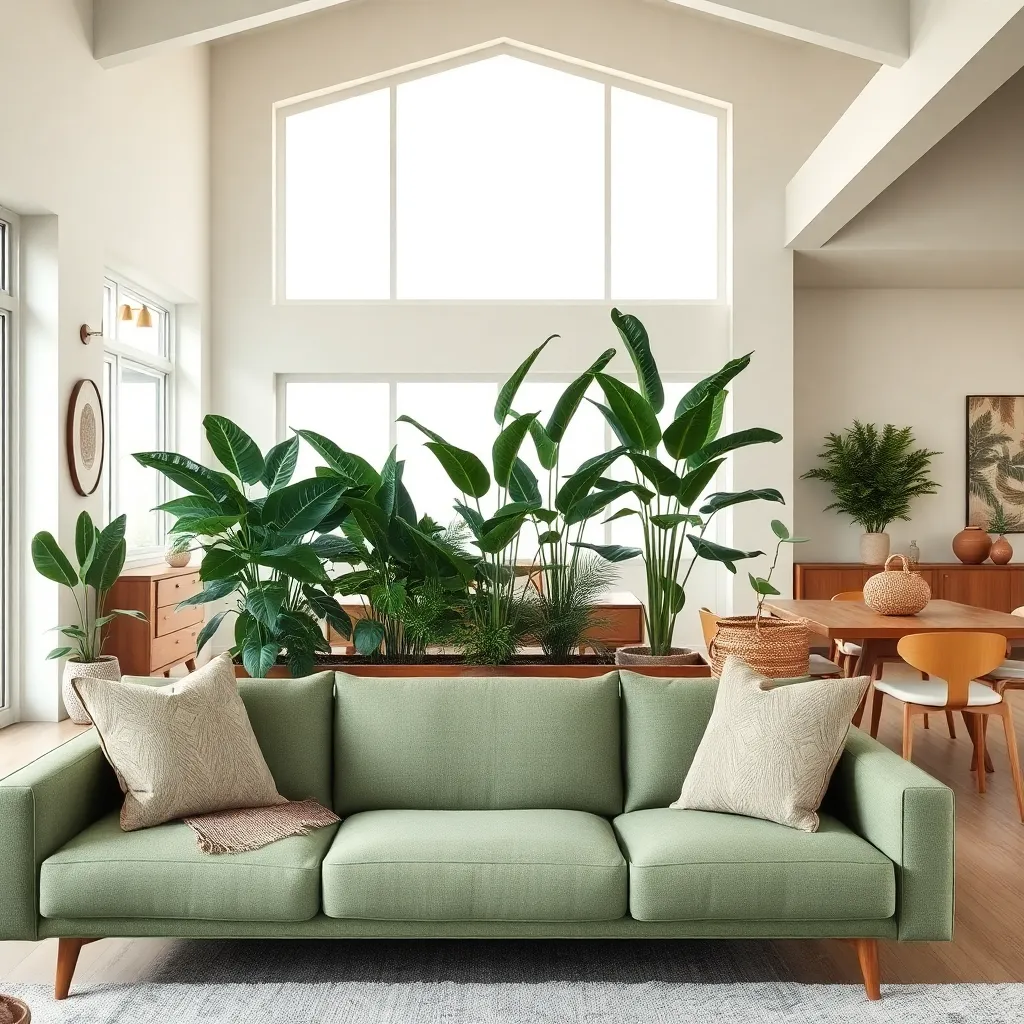
Using plants as room dividers not only segments spaces effectively but also adds a lush, natural element to your home. Begin by selecting tall, dense plants such as fiddle leaf figs or bamboo palms, which provide substantial coverage and height.
Consider placing these plants in beautiful, coordinated planters that complement your room’s color scheme. Opt for neutral tones like white or beige for a minimalist look, or choose vibrant hues to make a bold statement.
For smaller spaces, a series of hanging planters suspended at varying heights can create an airy partition without taking up floor space. Use sturdy hooks and adjustable ropes to ensure flexibility in height and arrangement, allowing for easy customization.
Advanced decorators might experiment with custom-built plant walls, using vertical gardens to divide larger spaces. These installations can involve built-in irrigation systems for low-maintenance upkeep, making them both practical and visually stunning.
Highlight with Accent Lighting
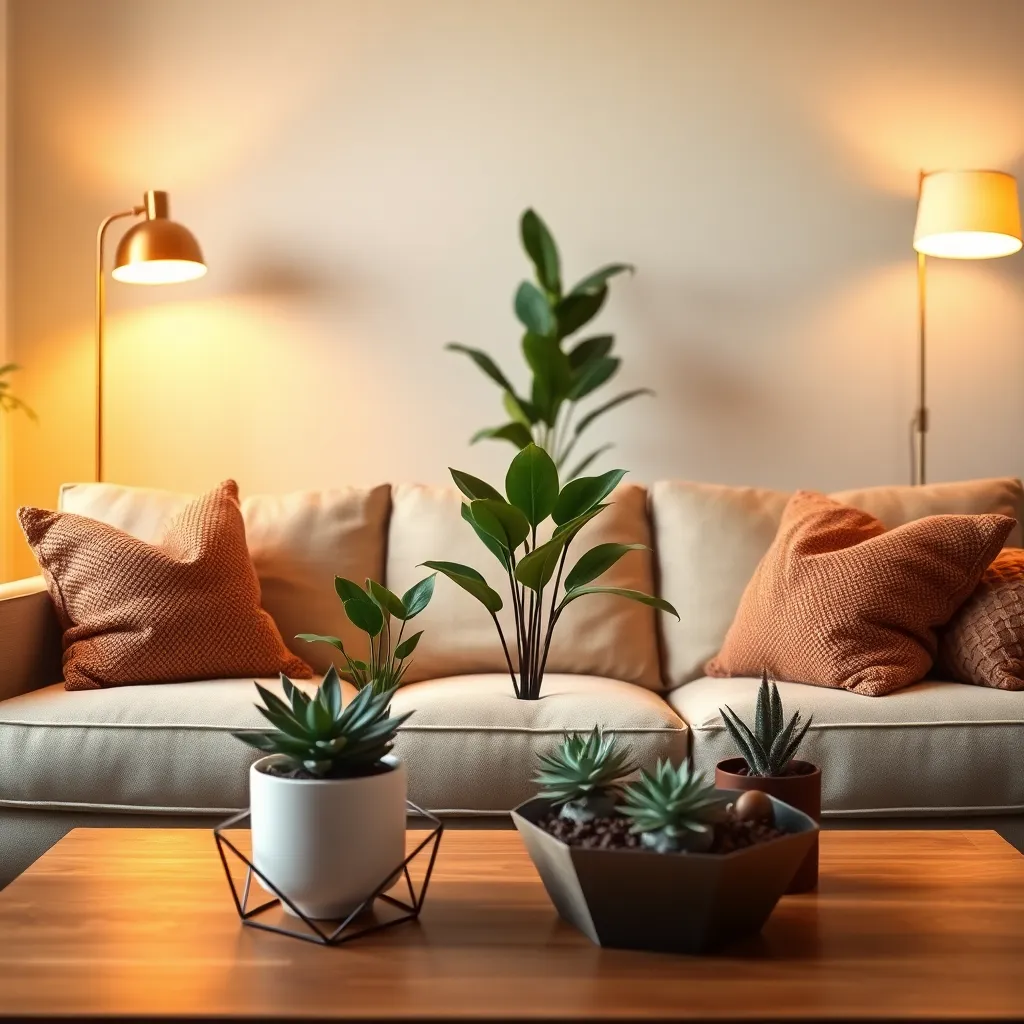
Accent lighting can transform the way your indoor plants are perceived, adding depth and drama to your space. Consider using spotlights or uplights to highlight the texture and color of your plants, creating visual interest and a cozy atmosphere.
Start by placing lights at the base of larger plants like fiddle leaf figs or monstera to create striking shadows. For smaller plants, position lights above them, ensuring they cast a gentle glow without overwhelming the plant’s natural beauty.
Experiment with different bulb colors to complement the greenery; warm white bulbs can enhance the richness of green leaves, while cooler tones might suit spaces with a modern vibe. Use dimmable lights to adjust the intensity based on the time of day or occasion, giving you flexibility and control over the ambiance.
For advanced decorators, integrating smart lighting systems offers an innovative way to control your plant lighting with a simple tap on your smartphone. This allows you to set schedules or change lighting scenes, ensuring your plants receive the perfect amount of attention all day long.
Conclusion: Growing Success with These Plants
In exploring the world of indoor plant styling, we’ve uncovered six key concepts that not only enhance your living space but also nurture your relationships. First, we learned the importance of choosing plants that fit your lifestyle, just as you would choose a partner who complements your personality. Next, we discussed creating focal points, akin to cherishing shared goals that keep relationships vibrant. We emphasized layering textures, much like the layers of understanding and empathy that strengthen bonds. The benefits of grouping plants remind us of the power of community and support networks. Opting for easy-care plants parallels the need for patience and low-maintenance love, while embracing seasonal changes highlights adaptability in relationships.
Now, take the first step towards cultivating both your indoor garden and your relationships by selecting a new plant with your partner, sparking a conversation about where it belongs in your home and life. To ensure these insights guide you on your journey, bookmark this article for future inspiration. As you nurture your plants, remember that thriving relationships also require attention and care. Embrace the journey towards relationship success, knowing that each small step can lead to a blossoming future together. Save this guide as your companion for continuous growth and connection.
